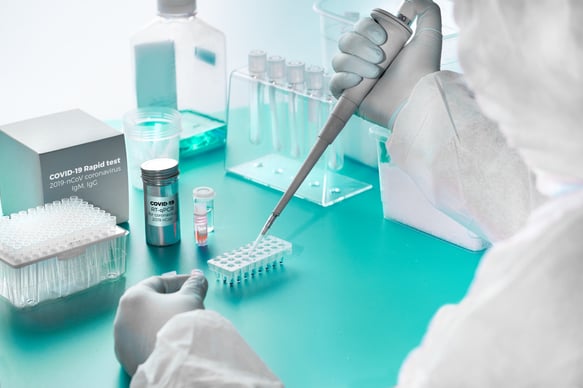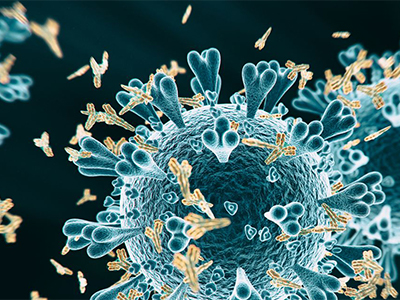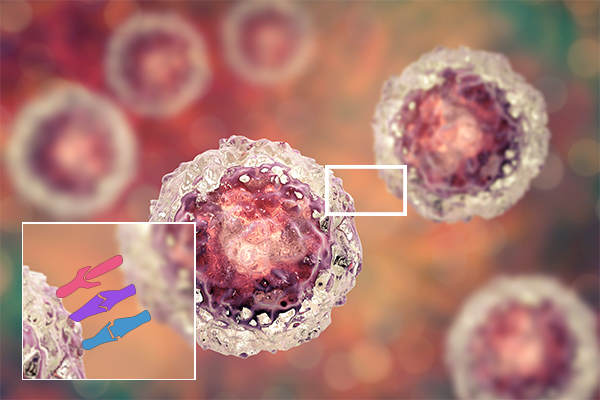The coronavirus disease 2019 (COVID-19) pandemic caused by SARS-CoV-2 has raised global health concerns. As case numbers continue to climb, there is an urgent need for an active drugs against SARS-CoV-2. The development of new drugs is time-consuming and costly, and the safety of new drugs is paramount. Therefore, the strategy of drug repurposing represents one of the fastest approaches to have an active drug to fight SARS-CoV-2 during the COVID-19 pandemic.
As a matter of fact, in silico repurposing approaches have found increasing popularity during the COVID-19 epidemic [1], especially with the great breakthrough achieved using 3CLpro as a target to screen drugs. By the end of 2021, the FDA has authorized the first oral antiviral drug Paxlovid, produced by Pfizer, to treat COVID-19. Due to that much of the scientific and clinical work on drug repurposing or drug screening against SARS-CoV-2 or COVID-19 is still ongoing, in this blog we will review the latest progress on the potential targets, including 3CLpro, for the drug discovery or intervention of COVID-19.

How does Paxlovid work?
SARS-CoV-2 is a positive-sense, single-stranded RNA virus with ~ 30-kb long genome. Structurally, SARS-CoV-2 contains four structural proteins, that include spike (S), envelope (E), membrane (M), and nucleocapsid (N) proteins with different functions during the viral life cycle. These proteins share high sequence similarity to the sequence of the corresponding protein of SARS-CoV, and MERS-CoV [2]. During the infection and replication of SARS-CoV-2, there are many protein-protein interactions between viral and human cellular proteins. The receptor-binding domain (RBD) in the Spike proteins of SARS-CoV-2 binds to the host cell membrane receptor, Angiotensin-Converting Enzyme-2 (ACE2) in humans, this helps in the entry of the virus into the target cells [3]. The human cell surface protease TMPRSS2 cleaves ACE2 and thus, helps in S protein activation and entry of the virus into the cell by endocytosis due to conformational changes that lead to membrane fusion. After entering the cells, SARS-CoV-2 releases its genetic material (mRNA) in the cytoplasm of the host cells which undergoes translation to form long polypeptides pp1a and pp1b. These polypeptides encoded by the 5’ ORF1a and ORF1b, are processed into 16 non-structural proteins (NSP1-16) auto-proteolytically using viral proteases like papain-like protease (PLpro) and chymotrypsin-like protease (3CLpro) to form the RNA replicase/transcriptase complex (RTC) [4-6]. The viral protease RNA-dependent RNA polymerase (RdRp) encoded by NSP12 as well as other viral proteases also help in the host RNA translation [6].

Figure 1 Source: Wikimedia Foundation. (2021, July 15). Cyclin. Wikipedia. Retrieved October 13, 2021, from https://en.wikipedia.org/wiki/Cyclin#/media/File:Cyclin_Expression.svg.
Paxlovid (nirmatrelvir [PF-07321332] tablets and ritonavir tablets) is an investigational SARS-CoV-2 protease inhibitor antiviral co-packaged with ritonavir authorized for emergency use for the treatment of high-risk patients with COVID-19 to prevent severe illness which can lead to hospitalization and death. Paxlovid belongs to a general class of drugs known as protease inhibitors. Paxlovid contains the novel antiviral nirmatrelvir (PF-07321332) which works by blocking the activity of SARS-CoV-2 main protease (Mpro), also known as SARS-CoV-2 3CL protease (3CLpro) [7]. In fact, 3CLpro is already a proven drug discovery target for SARS-CoVs and MERS-CoVs. This underlines the importance of 3CL protease in the design of potent drugs against COVID-19. 3CLpro is a first choice for repurposing campaigns due to its extensive experimental support [8], available crystallographic data, and good biological evaluation data [5, 9]. The protease is an attractive target as it plays a central role in the viral life cycle by processing the viral polyproteins pp1a and pp1ab at multiple distinct cleavage sites and complementary reports on repurposing research are available [10].
Other Candidate Targets for Intervention of COVID-19
Several in-depth reviews have summarized the major approaches, candidate targets for intervention of COVID-19, and pointed out the future direction of treatment. The widely studied targets can be classified as several categories, including targets involved in cell entry process of SARS-CoV-2, such as S glycoprotein of SARS-CoV-2, host proteins ACE2, TMPRSS2 and DPP-4, targets involved in SARS-CoV-2 replication, transcription and suppression of host immune response, such as RNA dependent RNA polymerase (RdRp), PLpro and 3CLpro, targets for cytokine storm inhibition, such as cytokine storm related inflammatory cytokine [1, 11-13].
Looking to the Future
Although a vast number of coronavirus-based or host-based trials for drugs with in vivo or in vitro activities against SARS-CoV-2 have been carried out, only a few of these drugs can be applied in clinical practice. In the long term, the intensive studies on pathogenic mechanisms of SARS-CoV-2 will give more clues in the context of developing potent drugs and vaccines against protein targets for the development of better approaches in COVID-19 therapy.
Molecular docking and simulation, as well as a literature search, can help to find various approved or candidate drugs that can target SARS-CoV-2 viral interactions with human host proteins. Various repurposed drug candidates targeting these host proteins help to interfere with the replication of SARS-CoV-2 and disease progression post-infection. Currently, more and more potential drug targets have been identified by in silico and in vitro studies of SARS-CoV-2 virus-host interactome for new drug screening and discovery. Some emerging repurposed drugs have also been screened and applied into clinical trials in COVID-19 patients by supplementing them with other approved antiviral drugs [13].
How ABclonal can Help
ABclonal offers a variety of SARS-CoV-2 research products including antibodies, proteins ELISA kits. This collection of products that can provide support for the research of drug development and therapies for COVID-19.
Research Tools for SARS-CoV-2 Viral Proteins
|
Target |
Antibodies (Cat.No.) |
Proteins (Cat.No.) |
ELISA Kits (Cat.No.) |
Antibody Pairs (Cat.No.) |
|
3CLpro |
|
|
||
|
Spike |
|
|||
|
Spike ECD |
|
|||
|
Spike RBD |
||||
|
Spike S1 |
|
|
||
|
Spike S2 |
|
|
|
|
|
Spike S2 ECD |
|
|
|
|
|
Nucleocapsid Protein |
||||
|
Envelope |
|
|
|
|
|
ORF3A |
|
|
|
|
|
ORF6 |
|
|
|
|
|
ORF7a |
|
|
|
|
|
ORF9b |
|
|
|
|
|
NSP1 |
|
|
|
|
|
NSP2 |
|
|
|
|
|
NSP3 |
|
|
|
|
|
NSP4 |
|
|
|
|
|
NSP6 |
|
|
|
|
|
NSP7 |
|
|
|
|
|
NSP8 |
|
|
|
|
|
NSP9 |
|
|
|
|
|
NSP10 |
|
|
|
|
|
NSP12 |
|
|
|
|
|
NSP13 |
|
|
|
|
|
NSP14 |
|
|
|
|
|
NSP15 |
|
|
|
|
|
NSP16 |
|
|
|
Antibodies for SARS-CoV-2 or COVID-19 Drug Discovery or Repurpose Related Host Targets
|
Category |
Target |
Cat.No. |
Application |
Reactivity |
|
Cell Entry of SARS-CoV-2 |
ACE2 |
WB,IHC |
Human,Mouse,Rat |
|
|
TMPRSS2 |
WB,IHC |
Human,Mouse,Rat |
||
|
DPP-4 |
WB |
Human,Mouse,Rat |
||
|
Viral replication |
Cyclophilin |
WB,IHC |
Human,Mouse,Rat |
|
|
Nucleotide biosynthesis |
IMPDH2 |
WB,IF |
Human,Mouse,Rat |
|
|
Transcriptional regulation |
BRD4 |
WB,IHC |
Human |
|
|
WB |
Human |
|||
|
WB |
Human, Mouse, Rat |
|||
|
Transcriptional regulation |
HDAC2 |
WB,IHC,IF,IP |
Human,Mouse,Rat |
|
|
DNMT1 |
WB,IHC,IF |
Human,Mouse,Rat |
||
|
Nuclear export |
XPO1 |
WB,IHC,IF |
Human,Mouse,Rat |
|
|
Translation control |
eEF1A |
WB,IF |
Human,Mouse,Rat |
|
|
eIF4E |
WB, IP |
Mouse, Rat |
||
|
Protein processing |
GLA |
WB |
Human,Mouse,Rat |
|
|
Protein degradation |
CUL2 |
WB,IHC |
Human,Mouse,Rat |
|
|
Receptors |
F2RL1 |
WB,IHC |
Human,Mouse,Rat |
|
|
Transporters |
SLC1A3 |
WB,IHC |
Human,Mouse,Rat |
|
|
MRP1/ABCC1 |
WB |
Human |
||
|
Cell devision regulation |
VCP |
WB,IF |
Human,Mouse,Rat |
|
|
Cytoskeleton dynamics |
MARK2/3 |
WB |
Human,Mouse,Rat |
|
|
Multifunctional kinases |
CSNK2A2 |
WB |
Human, Mouse, Rat |
|
|
Immunity and Inflammation |
RIPK1 |
WB,IP |
Human |
|
|
TBK1 |
WB,IF,IP |
Human,Mouse,Rat |
||
|
WB |
Human, Mouse |
|||
|
Redox homeostasis |
LOX |
WB,IHC |
Human,Mouse,Rat |
|
|
Cellular metabolism |
NDUFs |
WB,IHC |
Human,Mouse,Rat |
|
|
COMT |
WB |
Human,Rat |
ELISA Kits for COVID-19 Research
|
Target |
Cat.No. |
Sensitivity |
Assay Range |
|
TNF-α |
6.9 pg/mL |
15.6-1000 pg/ml |
|
|
IFN-β |
2.7 pg/mL |
15.6-1000pg/ml |
|
|
IFN-γ |
7.3 pg/mL |
15.6-1000 pg/ml |
|
|
IL-1ra |
15.1 pg/mL |
31.2-2000pg/ml |
|
|
IL-1α |
4 pg/ml |
7.8-500 pg/ml |
|
|
IL-1β |
3.9 pg/mL |
6.25-400 pg/ml |
|
|
IL-2 |
0.39 pg/mL |
0.78-50 pg/ml |
|
|
IL-4 |
15.2 pg/mL |
31.2-2000 pg/ml |
|
|
IL-5 |
0.7 pg/mL |
11.71-750pg/ml |
|
|
IL-6 |
0.7 pg/mL |
1.56-100pg/ml |
|
|
IL-7 |
5.23 pg/mL |
15.6-1000 pg/mL |
|
|
IL-8 |
1.7 pg/mL |
3.9-250 pg/ml |
|
|
IL-9 |
10pg/ml |
31.2-2000pg/mL |
|
|
IL-10 |
0.63 pg/mL |
3.13-200 pg/mL |
|
|
IL-12 p70 |
15.1pg/mL |
31.2-2000pg/ml |
|
|
IL-12/IL-23 p40 |
7.8 pg/ml |
15.6-1000 pg/ml |
|
|
IL-13 |
23 pg/ml |
46.9-3000 pg/ml |
|
|
IL-17 |
4.2 pg/mL |
7.8-500 pg/ml |
|
|
IL-22 |
15 pg/ml |
31.2-2000 pg/ml |
|
|
IL-23 |
7.8pg/ml |
31.2-2000pg/mL |
|
|
IL-27 |
23.4pg/mL |
46.875-3000pg/ml |
|
|
IL-37 |
15.6pg/mL |
31.25-2000 pg/mL |
|
|
IL-38 |
12.32 pg/mL |
62.5-4000 pg/mL |
|
|
CCL3/MIP 1-α |
7.8pg/ml |
15.6-1000pg/ml |
|
|
CCL4/MIP 1-β |
3.9pg/mL |
15.6-1000pg/mL |
|
|
CCL5 |
6.9 pg/mL |
31.2-2000 pg/mL |
|
|
CCL20 |
3.4 pg/mL |
7.8-500pg/ml |
|
|
CXCL1 |
43pg/ml |
78-5000pg/mL |
|
|
CXCL1/IP-10 |
12.6 pg/mL |
31.2-2000 pg/ml |
|
|
CXCL9 |
7.8pg/ml |
15.6-1000pg/ml |
|
|
GM-CSF |
7.8 pg/mL |
7.8-500 pg/ml |
|
|
MCP-1 |
15.2 pg/mL |
31.2-2000pg/ml |
|
|
M-CSF |
7 pg/mL |
15.6-1000 pg/ml |
|
|
HGF |
62.5pg/ml |
125-8000pg/ml |
|
|
PDGF-BB |
12.3 pg/mL |
31.2-2000pg/ml |
|
|
VEGF |
7.8 pg/mL |
31.2-2000pg/ml |
Reference
1. J Pharm Anal. 2021, 11(6): 683-690.
2. Nature Reviews Microbiology. 2021, 19: 685-700.
3. Cell Biosci. 2021, 11: 136.
4. Nature 2020, 582: 289-293.
5. Nat Commun 2021, 12: 743.
6. Nature. 2020, 584(7819): 154-156.
7. Protein Cell. 2021 Oct 22;1-5.
8. Nature. 2020, 583 (7816): 459-468.
9. J.Enzyme Inhib. Med. Chem. 2021, 36 (1): 147-153.
10. ACS Pharmacol. Translational Sci. 2021, 4 (3): 1096-1110.
11. Metabol Open. 2021, 12: 100121.
12. Pharmacol Ther. 2021 , 228: 107930.
13. Eur J Pharmacol. 2021, 898: 173977.



